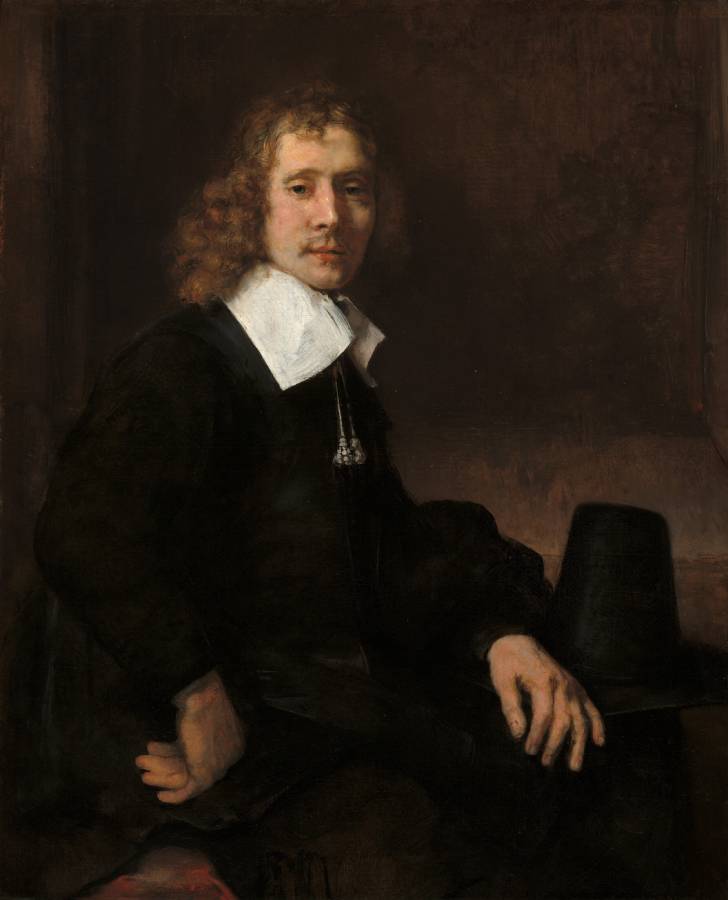Rembrandt (1606-1669)
A Young Man Seated at a Table, possibly Govaert Flinck
c.1660
Oil on canvas, 109.9 x 89.5 cm
National Gallery of Art, Washington
After learning the fundamentals of drawing and painting in his native Leiden, Rembrandt van Rijn went to Amsterdam in 1624 to study for six months with Pieter Lastman (1583–1633), a famous history painter. Upon completion of his training Rembrandt returned to Leiden. Around 1632 he moved to Amsterdam, quickly establishing himself as the town’s leading artist, specializing in history paintings and portraiture. He received many commissions and attracted a number of students who came to learn his method of painting. This painting of a stylish young man is one of Rembrandt‘s most sympathetic late portraits. The sitter’s handsome features and gentle expression, framed by the long locks of his hair, suggest warmth and sensitivity. At the same time, the understated simplicity of his dress — from the plain white collar, left open at the neck, to his black costume and hat — reinforces the sense of self-assurance so evident in the pose. The name of the sitter is not known, and the signature and date are extremely difficult to decipher. Stylistically, a date of about 1660 seems correct for this work. This portrait may represent the artist Govaert Flinck (1615–1660), as it resembles an engraved portrait of Flinck made by an unknown artist. At the time of his sudden death in February 1660, Flinck was at the height of his fame. Following his studies with Rembrandt in the mid-1630s, he became a successful portrait and history painter in a style that was admired by important civic and private patrons in both Amsterdam and his native Germany. Flinck was wealthy and well connected, and had a remarkable art collection. The emotional warmth of this portrait suggests that the contacts between the sitter and Rembrandt were personal as well as professional. Shown from the hips up, a young man with pale skin and wearing black clothing sits with his body angled to our right as he turns to look at us in this vertical portrait painting. He looks out with green eyes under hooded lids. Light falls across his face from the upper left so his bumped nose casts a shadow on his high cheekbone. He has a wispy mustache over full, pink lips, which are slightly parted. His hair falls to his shoulders in auburn-brown curls, framing his slender face. Two silvery tassels hang on cords from a tall, wide, flat, bright white collar, which contrasts with the velvety black of his voluminous, long-sleeved jacket. His left hand, farther from us, rests on his knee and the other hand is curled so the back of his knuckles press against his right hip, closer to us. A patch of crimson red near that hand could be a pillow on his chair. His hat rests, presumably on a table, just beyond his legs. The hat has a tall, tapering, conical crown with a flat top. The shadowy wall behind him is mottled with slate gray and caramel brown, with a slightly darker panel to suggest a shallow niche. (NGA)
See also:
• Flinck, Govert (1615-1660)
